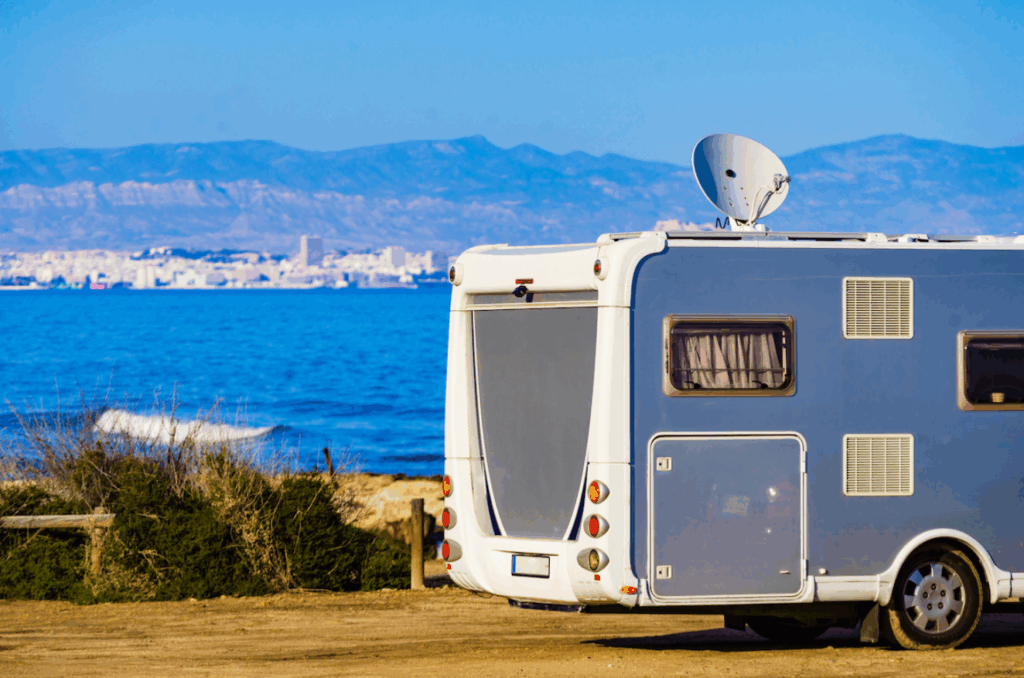For RV enthusiasts and camping lovers, staying connected while exploring remote destinations is now easier than ever. Satellite internet for RV provides a reliable solution, ensuring you never lose connectivity, even in the most off-grid locations. In this guide, we’ll explore the best options, key features, and tips for choosing the perfect RV satellite internet setup for your adventures.
Why Satellite Internet for RV is a Game-Changer
Traditional internet options like cellular hotspots or campground Wi-Fi often fail in remote areas, leaving travelers disconnected. Satellite internet for RV solves this problem by using orbiting satellites to deliver a stable connection, regardless of location.
Unlike ground-based services, RV satellite internet doesn’t rely on local infrastructure, making it ideal for boondocking and cross-country travel. Whether you’re working remotely, streaming entertainment, or staying in touch with family, satellite internet ensures seamless access wherever your journey takes you.
Top Satellite Internet Providers for RV Travelers
Several providers specialize in satellite internet for RV, each offering unique benefits. Starlink RV is a popular choice due to its high-speed, low-latency performance, while HughesNet and Viasat provide reliable nationwide coverage with flexible data plans.
For those needing global connectivity, Iridium and KVH offer specialized systems for long-term travelers. Many providers now offer RV-specific plans, including seasonal suspensions and pay-as-you-go options, making it easier to stay connected without long-term contracts.
How RV Satellite Internet Works
Satellite internet for RV operates by transmitting signals between a dish mounted on your vehicle and a satellite in orbit. The dish must have a clear line of sight to the sky, meaning obstructions like trees or mountains can affect performance.
Once connected, the modem converts satellite signals into usable internet for your devices. Some systems, like Starlink’s flat-panel dish, automatically adjust to maintain a strong connection, while others may require manual alignment. Understanding how these systems work helps ensure optimal performance on the road.
Portable vs. Fixed Satellite Dishes for RVs
When choosing satellite internet for RV, you’ll need to decide between portable and fixed-mounted dishes. Portable options, like Starlink’s compact design, are easy to set up and store, making them great for occasional travelers.
Fixed dishes, such as those from KVH or Winegard, are permanently installed on your RV’s roof and offer automatic tracking for uninterrupted service. While more expensive, they provide a hassle-free experience, ideal for full-time RVers who need constant connectivity.
Data Plans and Speed Considerations for RV Internet
Data limits and speeds vary widely among satellite internet for RV providers. Starlink RV offers high-speed plans with unlimited data in select areas, while HughesNet and Viasat provide tiered data packages with throttling after reaching a cap.
For light users (email, browsing), lower-data plans may suffice, but streamers and remote workers should prioritize high-speed, high-data options. Always check for off-peak unlimited data or throttling policies before selecting a plan.
Installation and Setup of RV Satellite Internet
Setting up satellite internet for RV can be simple or complex, depending on the system. Starlink’s plug-and-play setup requires minimal effort—just place the dish outside and connect the modem.
For roof-mounted systems like KVH, professional installation is recommended to ensure proper alignment and weatherproofing. Some RVers prefer DIY setups, but incorrect installation can lead to poor signal strength or damage while driving.
Best Practices for Maximizing Satellite Internet on the Road
To get the most out of satellite internet for RV, position your dish in an open area away from obstructions. Parking under trees or near tall structures can weaken the signal.
Additionally, using a Wi-Fi extender inside your RV improves coverage, while a signal booster helps in weak reception zones. Monitoring data usage and scheduling large downloads during off-peak hours can also optimize performance.
Cost of Satellite Internet for RV: What to Expect
Pricing for RV satellite internet varies based on equipment and data needs. Starlink RV costs around $150/month with a one-time hardware fee, while HughesNet and Viasat offer plans starting at $50–$100/month with long-term contracts.
Roof-mounted automatic systems (like KVH) have higher upfront costs ($2,000–$5,000) but provide convenience for frequent travelers. Weighing the initial investment against your travel habits helps determine the best value.
Future of Satellite Internet for RV Travelers
Advancements in satellite internet for RV are rapidly improving connectivity for travelers. Starlink’s expanding low-Earth orbit network promises faster speeds and lower latency, while competitors like Amazon’s Project Kuiper aim to enhance coverage further.
As technology evolves, RV satellite internet will become even more accessible, with lighter, more affordable systems and global coverage. This means travelers can expect better performance and more options in the coming years.
Final Thoughts: Choosing the Best RV Satellite Internet
Selecting the right satellite internet for RV depends on your travel style, data needs, and budget. Starlink is ideal for speed and flexibility, while HughesNet and Viasat offer reliable coverage with traditional satellite plans.
For full-time RVers, automatic roof-mounted systems provide the best convenience, whereas weekend campers may prefer portable setups. By evaluating coverage, speed, and cost, you can find the perfect solution to stay connected on the road.
Ready for Uninterrupted Connectivity?
With the right satellite internet for RV, you can explore freely without sacrificing access to work, entertainment, or emergency communication. Whether boondocking in the desert or camping in the mountains, a strong satellite connection keeps you linked to the world.
